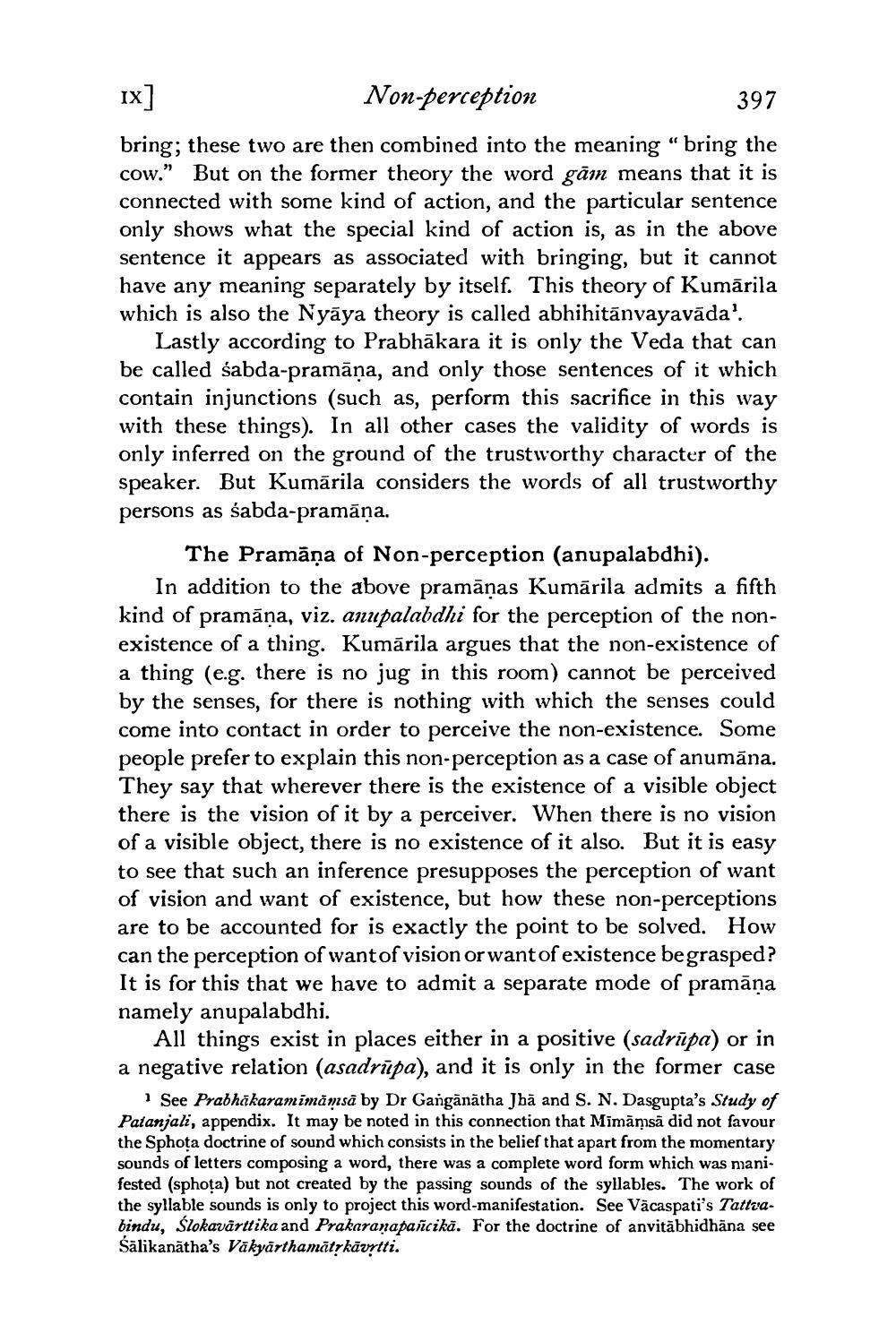________________
ix]
Non-perception
397
bring; these two are then combined into the meaning " bring the cow." But on the former theory the word gām means that it is connected with some kind of action, and the particular sentence only shows what the special kind of action is, as in the above sentence it appears as associated with bringing, but it cannot have any meaning separately by itself. This theory of Kumārila which is also the Nyāya theory is called abhihitānvayavāda'.
Lastly according to Prabhākara it is only the Veda that can be called śabda-pramāņa, and only those sentences of it which contain injunctions (such as, perform this sacrifice in this way with these things). In all other cases the validity of words is only inferred on the ground of the trustworthy character of the speaker. But Kumārila considers the words of all trustworthy persons as śabda-pramāņa.
The Pramāņa of Non-perception (anupalabdhi). In addition to the above pramāņas Kumārila admits a fifth kind of pramāņa, viz. anupalabdhi for the perception of the nonexistence of a thing. Kumārila argues that the non-existence of a thing (e.g. there is no jug in this room) cannot be perceived by the senses, for there is nothing with which the senses could come into contact in order to perceive the non-existence. Some people prefer to explain this non-perception as a case of anumāna. They say that wherever there is the existence of a visible object there is the vision of it by a perceiver. When there is no vision of a visible object, there is no existence of it also. But it is easy to see that such an inference presupposes the perception of want of vision and want of existence, but how these non-perceptions are to be accounted for is exactly the point to be solved. How can the perception of wantof vision or wantof existence begrasped? It is for this that we have to admit a separate mode of pramāna namely anupalabdhi.
All things exist in places either in a positive (sadrīpa) or in a negative relation (asadrūpa), and it is only in the former case
See Prabhākaramimamsā by Dr Gangānātha Jhā and S. N. Dasgupta's Study of Patanjali, appendix. It may be noted in this connection that Mimāņsā did not favour the Sphoța doctrine of sound which consists in the belief that apart from the momentary sounds of letters composing a word, there was a complete word form which was nanifested (sphota) but not created by the passing sounds of the syllables. The work of the syllable sounds is only to project this word-manifestation. See Vācaspati's Tattvabindu, Ślokavårttika and Prakaranapascikā. For the doctrine of anvitābhidhāna see Salikanātha's Vakyārthamäty kävytti.




